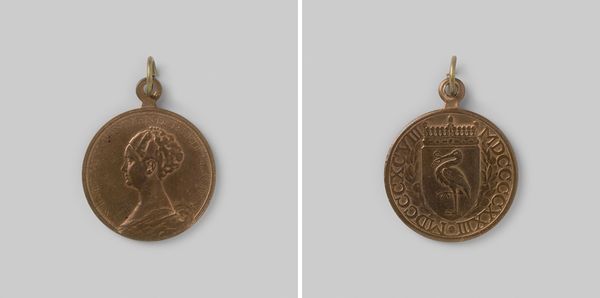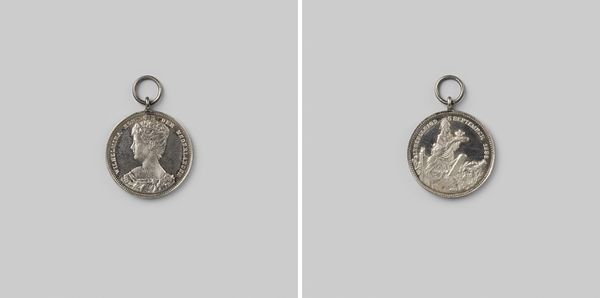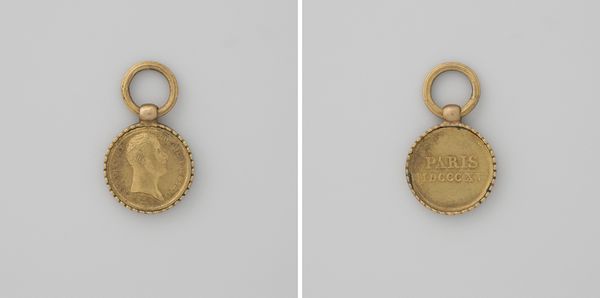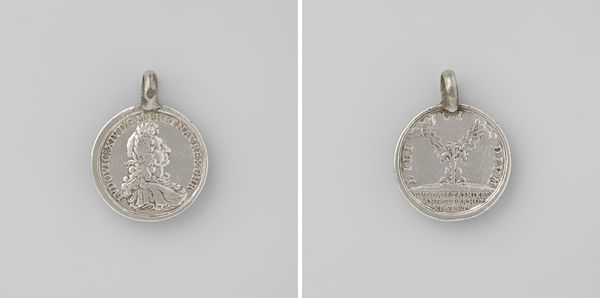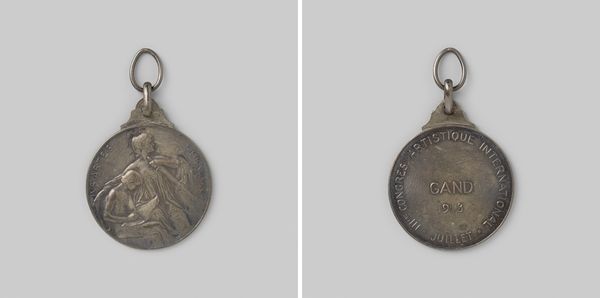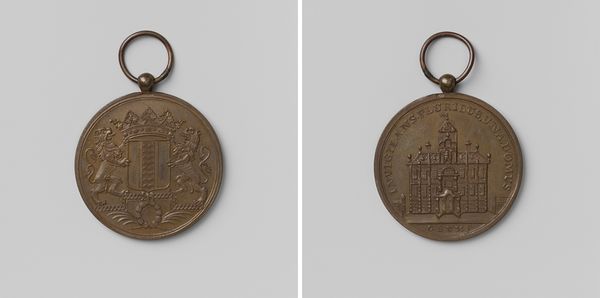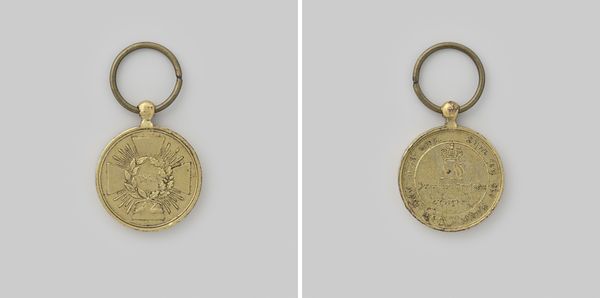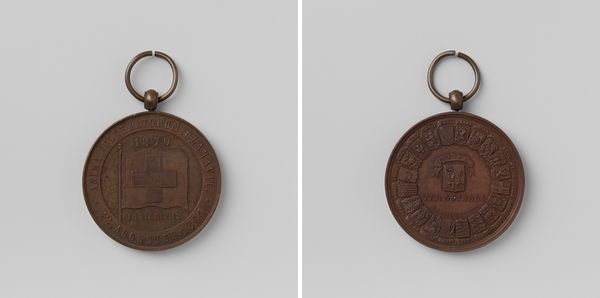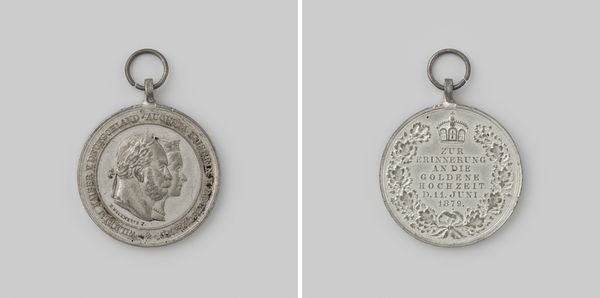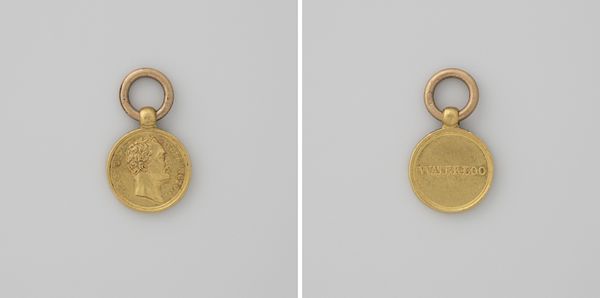
relief, bronze
#
medal
#
relief
#
bronze
#
history-painting
Dimensions: height 4.2 cm, height 3.5 cm, diameter 2.9 cm, weight 12.49 gr
Copyright: Rijks Museum: Open Domain
Curator: Here at the Rijksmuseum, we have a bronze relief, a support medal crafted possibly around 1915 by Johannes Cornelis Wienecke titled, "De steunpenning 1914". Editor: My initial impression is one of constrained elegance, it's weighty history distilled into something palm-sized. Curator: This medal was produced during World War I, a period marked by significant shifts in global power dynamics. Medals such as this one functioned as propaganda tools, intended to evoke specific emotions and solidify support for particular causes. Editor: Absolutely. You can see it in the details—the deliberate imagery. The medal feels like a plea for solidarity. Who was the intended audience, and how would they have engaged with an object like this? Curator: Good question. The context of distribution is key. These weren't meant for general circulation. They were likely commissioned and presented to specific individuals, perhaps those who had contributed financially or through other means to the war effort or relief funds. It’s about bolstering support, rewarding allegiance. Editor: Yes, it transforms from a mere object into an instrument of social engineering. It also raises the issue of whose stories are being amplified and memorialized and at whose expense. The narrative inscribed here may actively silence or marginalize dissenting voices. Curator: Indeed. We should consider this medal's limitations as an historical document. Its perspective is inherently biased, favoring those who held power and influence. This, of course, invites important reflections on our contemporary landscape of public imagery and the shaping of collective memory. Editor: Ultimately, an artifact like this urges us to examine the complex interplay of art, politics, and memory. Thank you for sharing these perspectives. Curator: It's essential we reflect upon such historical relics—inviting open dialogues about power and the ways societies grapple with shared experiences.
Comments
No comments
Be the first to comment and join the conversation on the ultimate creative platform.
